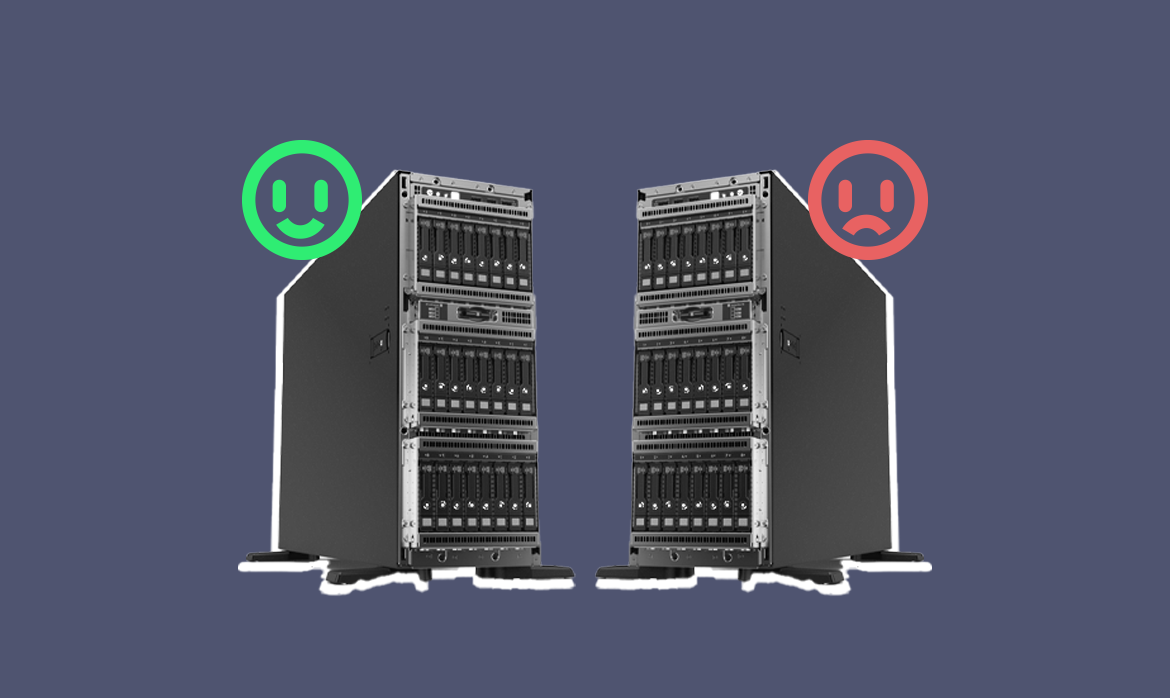Choosing a server is a pivotal decision that lays the foundation for your organization’s digital infrastructure. Whether you’re hosting applications, managing data, or facilitating communication, the right server can streamline operations and bolster efficiency. To ensure you make an informed choice, we’ve distilled the process into eight key considerations: Onsite or Cloud, Chassis, Processor, Memory, RAID, Storage, Fans, and Power Supply. By exploring these critical aspects, you can pave the way for a robust and reliable server that meets your organization’s unique needs.
- Onsite or Cloud: Where Will it Reside?
The first question in your server journey is whether to opt for an onsite server or leverage the capabilities of the cloud. Each option has distinct advantages and considerations.
- Onsite Server -provides complete control over hardware, security, and customization. It’s ideal for organizations with specific compliance requirements or those seeking maximum control over their data.
- Cloud Server – offers scalability, flexibility, and reduced maintenance overhead. Cloud servers are particularly valuable for businesses with dynamic workloads and remote teams.
- Chassis: The Foundation of Form
The chassis is the physical enclosure that houses the server’s components. It plays a pivotal role in maintaining optimal performance and cooling.
- Form Factor – choose a form factor (rack-mounted, tower, or blade) that aligns with your available space and infrastructure needs.
- Expansion Options – consider the number of available slots for additional components, such as hard drives, network cards, and graphics cards.
- Processor: The Brains Behind Performance
The processor (CPU) is the heart of your server, determining its processing power and ability to handle workloads.
- Cores and Threads – higher core and thread counts enhance multitasking and performance for applications that can utilize multiple threads.
- Clock Speed – opt for a balance between core count and clock speed based on your workload requirements.
- Memory: Fueling Multitasking and Performance
Server memory (RAM) is critical for managing multiple tasks and ensuring smooth application performance.
- Capacity – choose an ample amount of RAM to handle your anticipated workloads. Aim for a minimum of 16GB, with more for memory-intensive applications.
- ECC (Error-Correcting Code) – ECC RAM detects and corrects memory errors, enhancing server stability and data integrity.
- RAID: Data Redundancy and Performance
RAID (Redundant Array of Independent Disks) configurations enhance data redundancy and performance through disk striping and mirroring.
- RAID Levels – select a RAID level that aligns with your priorities—data redundancy (RAID 1, RAID 5) or performance (RAID 0, RAID 10).
- Hot Swappable Drives – opt for servers with hot-swappable drive bays to simplify maintenance and minimize downtime.
- Storage: Balancing Capacity and Speed
Storage is a critical component of your server, impacting data access speed and overall system performance.
- Hard Disk Drives (HDDs) – HDDs offer cost-effective storage for large capacities but may have slower read/write speeds compared to solid-state drives (SSDs).
- Solid-State Drives (SSDs) – SSDs deliver faster performance, reduced latency, and improved data access speeds, making them ideal for applications with high I/O demands.
- Fans: Keeping Temperatures in Check
Cooling is paramount for maintaining server stability and prolonging hardware lifespan.
- Redundant Fans- servers with redundant fan configurations ensure that cooling remains effective even if one fan fails.
- Efficient Airflow – choose a chassis design that promotes efficient airflow to prevent overheating and maintain optimal performance.
- Power Supply: Reliable Energy Source
A reliable power supply is essential for uninterrupted server operation.
- Redundant Power Supplies- servers equipped with redundant power supplies offer failover protection in case one power supply fails.
- Power Efficiency -opt for power-efficient components to reduce energy consumption and operating costs.
Selecting the right server involves a careful evaluation of numerous factors that impact performance, reliability, and scalability. By considering the choice between onsite and cloud servers, assessing chassis options, optimizing processor and memory configurations, implementing RAID for data protection, selecting appropriate storage solutions, ensuring efficient cooling with fans, and prioritizing a reliable power supply, you can navigate the complex server landscape with confidence.
Ultimately, a well-chosen server lays the groundwork for seamless operations, robust data management, and optimal application performance. As your organization’s technological needs evolve, a well-considered server choice will provide the stability and agility required to adapt and thrive in the ever-changing digital landscape.

